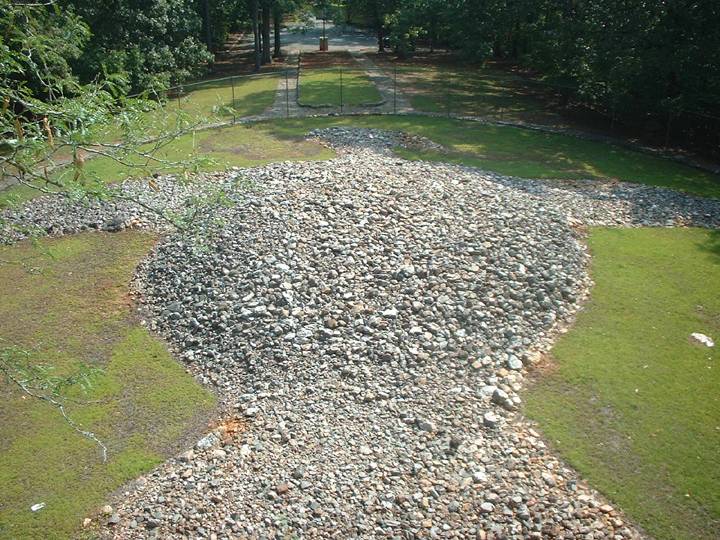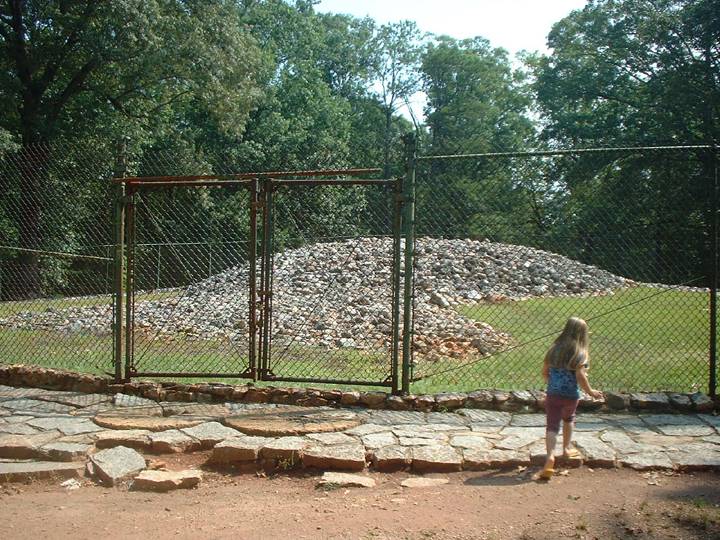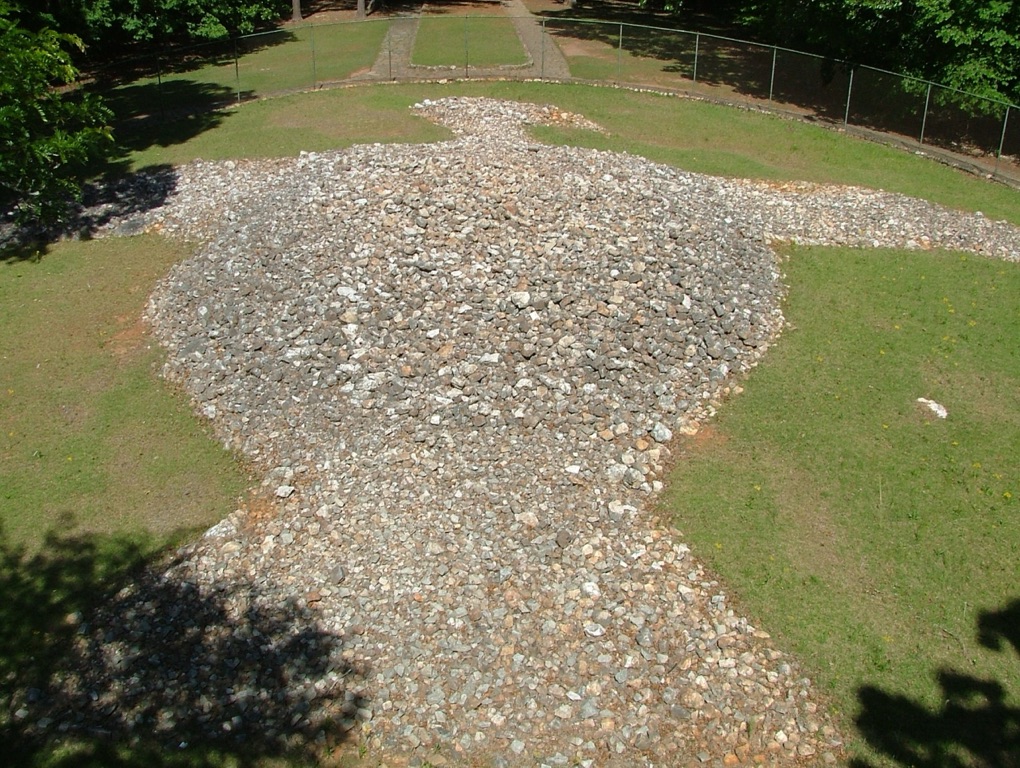The Enigmatic Rock Eagle Effigy Mound: A Prehistoric Marvel
The Rock Eagle Effigy Mound, located in Putnam County, Georgia, represents one of the most intriguing and enigmatic prehistoric archaeological sites in the United States. Estimated to have been constructed between 1000 BC and AD 1000, this monumental earthwork stands as a testament to the ingenuity and spiritual depth of the early inhabitants of Middle Georgia. Despite extensive scholarly research, the precise cultural significance and the identity of its creators remain subjects of speculation and debate.
Get your dose of History via Email
Archaeological Context and Construction
The Rock Eagle Effigy Mound is one of only two known bird effigy mounds east of the Mississippi River, the other being Rock Hawk, also in Putnam County. Measuring 102 feet in length from head to tail and 120 feet in width from wingtip to wingtip, the mound is composed of thousands of pieces of quartzite, meticulously arranged to form the shape of a large bird. While commonly referred to as an eagle, the exact species of bird intended by its builders is unknown.
Initial theories posited the mound’s construction as far back as 5,000 years ago by Archaic Indians. However, current archaeological consensus dates the mound to a period between 1,000 and 3,000 years ago, attributing its creation to Woodland Indians. These Native Americans may have been part of the Adena or Hopewell cultures, or possibly a distinct group altogether. This places Rock Eagle as the second oldest Indian mound in Georgia, following the Sapelo Shell Ring Complex.

Purpose and Significance
The purpose behind the construction of the Rock Eagle Effigy Mound has eluded definitive explanation. Early settlers speculated about buried treasures, leading to sporadic excavation attempts. Twentieth-century archaeologists, however, have focused on understanding the mound’s cultural and ceremonial significance. Theories range from its use as a central burial site to a monumental message to the gods. The bald eagle’s association with the spirit upper world and the southeastern tribes’ reverence for the sun suggest a cosmological significance to the mound’s orientation and design.
The mound’s bird figure, with its large beak and fan tail, faces south by southeast, contrary to earlier beliefs that it faced east towards the rising sun. This orientation, along with the discovery of non-indigenous clay and evidence of human cremation on the mound, hints at a complex ritualistic significance, possibly related to death and rebirth symbolism.

Archaeological Investigations and Findings
Scholarly study of the Rock Eagle Effigy Mound began in earnest by 1877, with significant excavations conducted in the 1930s by University of Georgia archaeologist A. R. Kelly. Despite these efforts, the mound has yielded few artifacts, with the notable exception of a single quartz tool and evidence of cremated human burials. This scarcity of material findings has only deepened the mystery surrounding the mound’s purpose and the people who built it.
In the 1950s, the Works Progress Administration constructed a granite tower at the site, facilitating aerial views for visitors and furthering research and public interest in the effigy. The mound and its surroundings have undergone extensive renovations to preserve its integrity and enhance educational opportunities.
Preservation and Legacy
The Rock Eagle Effigy Mound was listed on the National Register of Historic Places in 1987, recognizing its significance and ensuring its protection. Managed by the University of Georgia, the site now serves as an educational resource, with the adjoining Rock Eagle 4-H Center named in its honor. Access to the mound is restricted to protect its integrity, but visitors can explore the surrounding area and learn about the site’s history and significance through interpretive panels.
The Rock Eagle Effigy Mound remains a powerful symbol of the deep cultural and spiritual connections of the Native American peoples of Georgia. Its enduring mystery invites ongoing scholarly inquiry and public fascination, making it a vital part of America’s archaeological heritage.
Sources:

